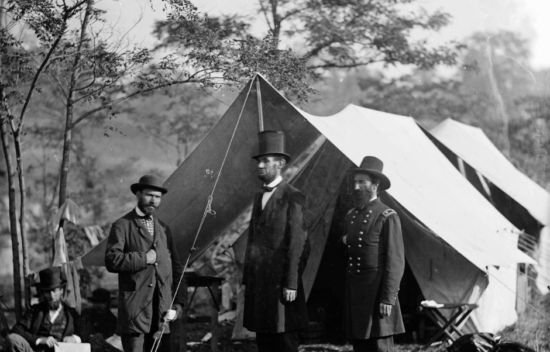
Turning Points and Events of the Civil War Timeline
Lesson Components
Civil War Interactive TimelineGuiding Question
- What were the major turning points and events of the Civil War?
Objective
- Students will explain the major turning points and events of the Civil War.
Student Resources:
Engage
Glossary term(s): turning point
- Say to students, “In addition to battles, many things can happen in a country during a war, especially when the country is at war with itself. Today, we are going to learn about many battles and events that happened during the Civil War. The battles and events we discuss today have been selected because of their importance. Many of these battles and events could be argued to be a turning point. If I were to ask you to define the phrase ‘turning point,’ what definition would you give?”
- Give the students time to think then call on a few to share.
Explore
Guided Exploration Process
- Access the Civil War Interactive Timeline
- Have students read the Battle of Antietam description individually and answer the question: Why did Lincoln wait for a Union victory to issue the Emancipation Proclamation?
- After they read, have them also answer “What is one reason this was a turning point?”
- Partner students and have them share and compare their reasons Antietam was a turning point, calling on a few partners to share with the class.
- Ask questions such as:
- Did you and your partner have the same reason?
- Would you change your mind after hearing what your partner said?
- How is more than one answer possible?
- Ask questions such as:
- Repeat this process for the Battle of Vicksburg, Battle of Gettysburg, and Sherman’s March timeline entries.
Independent Timeline Investigation
- Next, assign each of the entries on the timeline starting with Fort Sumter through the Surrender at Appomattox to a student or two (Fort Sumter, Jefferson Davis is Elected, Homestead Act, Morrill Act, Emancipation Proclamation, Fort Wagner, Suspension of Habeas Corpus, The Amnesty and Reconstruction Act, Lincoln is Re-elected, and the Surrender at Appomattox).
- Have students read the description and be ready to share with classmates the “who, what, when, where, and why” of their event.
- Then place students into two circles, one on the inside and one on the outside to share out with classmates for two minutes (one minute each person) to share the “who, what, when, where, and why” of their event. Move the inner circle clockwise until all students have heard from each other event.
- Transition: Tell students “You have now looked at thirteen major events during the Civil War. We have one more activity that considers these events and your analysis of them.”
Assess & Reflect
- Open Sort Assessment
- Have students create at least three columns, titled with categories of their choice.
- Instruct students to categorize the events into one of the categories they have created.
- For example, their categories could be military engagements, executive, and legislative, or Confederate, Union, and Civilian.
- Instruct students to categorize the events into one of the categories they have created.
- Students should sort the topics from today into the categories they have created, at least two topics per category.
- Finally, have students justify why they put the events in each category either verbally in a class share out or in writing.
AND/OR
- Written Thesis Statement
- Have students select one battle or event from today’s topics as the most significant turning point of the war. Write a thesis and develop a line of reasoning as to why that battle, or event, is the most important turning point in the Civil War.